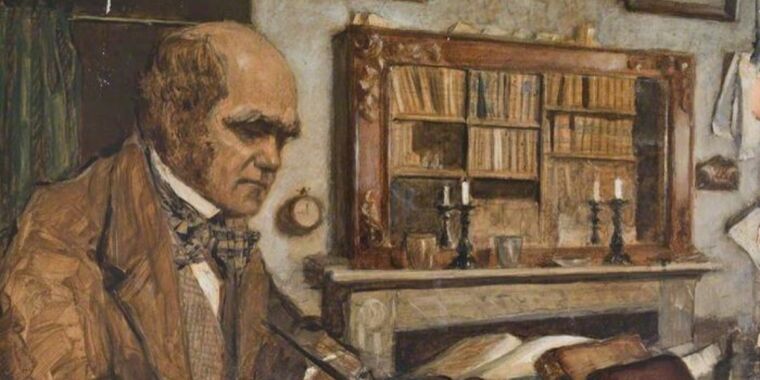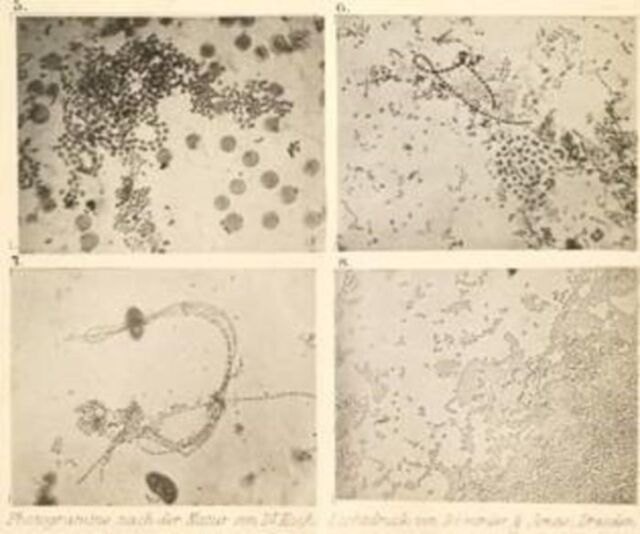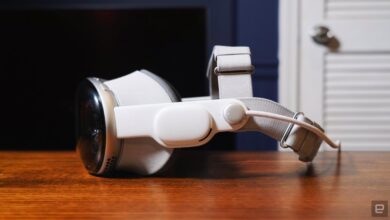Darwin Online has virtually reassembled the naturalist’s personal library


State Darwin Museum, Moscow
Famed naturalist Charles Darwin amassed an impressive personal library over the course of his life, much of which was preserved and cataloged upon his death in 1882. But many other items were lost, including more ephemeral items like unbound volumes, pamphlets, journals, clippings, and so forth, often only vaguely referenced in Darwin’s own records.
For the last 18 years, the Darwin Online project has painstakingly scoured all manner of archival records to reassemble a complete catalog of Darwin’s personal library virtually. The project released its complete 300-page online catalog—consisting of 7,400 titles across 13,000 volumes, with links to electronic copies of the works—to mark Darwin’s 215th birthday on February 12.
“This unprecedentedly detailed view of Darwin’s complete library allows one to appreciate more than ever that he was not an isolated figure working alone but an expert of his time building on the sophisticated science and studies and other knowledge of thousands of people,” project leader John van Wyhe of the National University of Singapore said. “Indeed, the size and range of works in the library makes manifest the extraordinary extent of Darwin’s research into the work of others.”
Darwin was a notoriously voracious reader, and Down House was packed with books, scientific journals pamphlets, and magazine clippings that caught his interest. He primarily kept his personal library in his study: an “Old Study” and, after an 1877 addition to the west end of the house, a “New Study.” A former governess named Louise Buob described how Darwin’s books and papers inevitably spilled “into the hall and corridors, whose walls are covered with books.”
The French literary critic Francisque Sarcey remarked in 1880 that the walls of the New Study were concealed “top to bottom” with books, as well as two bookcases in the middle of the study—one filled with books, the other with scientific instruments. This was very much a working library, with well-worn and often tattered books, as opposed to fine leather-bound volumes designed for display. After Darwin died, an appraiser valued the scientific library at just 30 pounds (about 2,000 pounds today) and the entire collection of books at a mere 66 pounds (about 4,400 pounds today). Collectors now pay a good deal more for a single book that once belonged to Darwin.

Public domain
The two main collections of Darwin’s books—amounting to some 1,480 titles—are housed at the University of Cambridge and Down House, respectively, but that number does not include the more ephemeral items referred to in Darwin’s own records. According to the folks at Darwin Online, tracking down every single obscure reference to a publication was a case study in diligent detective work since Darwin often only hurriedly jotted down a few notes, with crucial information like author, date, or even the source of a clipping often missing.
Many of these have now been identified for the first time. One of the project’s major sources was a handwritten 426-page compilation from 1875, whose abbreviated entries eventually yielded 440 previously unknown titles originally in Darwin’s library. They also scoured Darwin’s reading notebooks, Emma Darwin’s diaries, a 1908 catalog of books donated to Cambridge, and the Darwin Correspondence (30 volumes in all), as well as historic auction and rare book catalogs.
The newly discovered items in Darwin’s library include works by philosophers John Stuart Mill and Auguste Comte, as well as Charles Babbage and what was at the time a controversial book on gorillas: Paul du Chaillu’s Explorations and Adventures in Equatorial Africa. The naturalist also owned a copy of an 1826 article on the habits of the turkey buzzard by ornithologist John James Audubon. His personal library also included less heady fare, like a coffee table book of heliotrope illustrations, an 1832 road atlas of England and Wales, an 1852 treatise on investments, a book about chess, an illustrated 1821 book on the Nomenclature of Colours, and a book on the “water cure” for chronic disease. (Darwin was a devotee of the water cure—not to be confused with the method of torture—for his many ailments.)
As impressive as the Darwin Online catalog currently is, the project is still ongoing. “There can be no doubt that further works that belonged to Darwin and his family remain to be recorded here,” the folks at Darwin Online wrote, and the project welcomes any information that leads to those missing works.

Public domain
Source link




